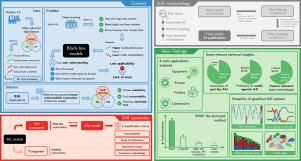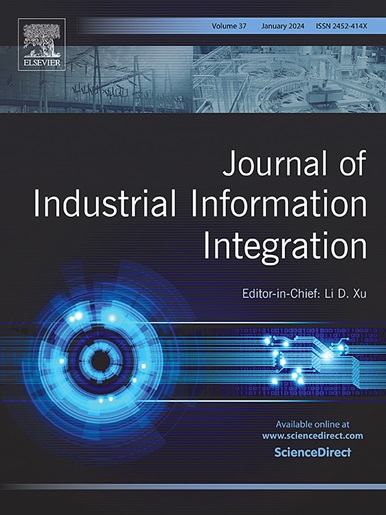Explainable AI for industrial fault diagnosis: A systematic review
IF 10.4
1区 计算机科学
Q1 COMPUTER SCIENCE, INTERDISCIPLINARY APPLICATIONS
引用次数: 0
Abstract
The integration of Artificial Intelligence (AI) and Machine Learning (ML) into industrial environments, particularly for optimising fault detection and diagnosis, has accelerated with Industry 4.0 and 5.0. However, the “black-box” nature of these methods hinders practical implementation, as trust, interpretability, and explainability are crucial for informed decision-making. Furthermore, impending regulatory frameworks like the EU AI Act make directly implementing opaque AI for critical industrial tasks infeasible. Explainable AI (XAI) offers a promising solution by enhancing ML model interpretability and auditability through human-understandable explanations. This review comprehensively analyses recent XAI advancements for industrial fault detection and diagnosis, presenting a novel taxonomy for XAI methods and discussing how XAI outputs are generated, conveyed to end-users, and evaluated. It then systematically reviews real-world industrial XAI implementations, highlighting their applications, methods, and output presentation approaches. Key identified trends include the dominance of post-hoc feature attribution methods, widespread use of SHAP and GradCAM, and a strong reliance on graphical explanation tools. Finally, it identifies current challenges and outlines future research directions to promote the development of interpretable, trustworthy, and auditable AI systems in industrial settings.

可解释人工智能在工业故障诊断中的应用:系统综述
人工智能(AI)和机器学习(ML)集成到工业环境中,特别是优化故障检测和诊断,随着工业4.0和5.0的发展而加速。然而,这些方法的“黑箱”性质阻碍了实际的实施,因为信任、可解释性和可解释性对于明智的决策至关重要。此外,欧盟人工智能法案等即将出台的监管框架使得直接在关键工业任务中实施不透明的人工智能变得不可行。可解释AI (XAI)通过人类可理解的解释增强ML模型的可解释性和可审计性,提供了一个很有前途的解决方案。本文全面分析了XAI在工业故障检测和诊断方面的最新进展,提出了XAI方法的新分类,并讨论了如何生成、传递给最终用户和评估XAI输出。然后系统地回顾现实世界的工业XAI实现,重点介绍它们的应用程序、方法和输出表示方法。确定的主要趋势包括:事后特征归因方法的主导地位,SHAP和GradCAM的广泛使用,以及对图形解释工具的强烈依赖。最后,它确定了当前的挑战,并概述了未来的研究方向,以促进工业环境中可解释、可信赖和可审计的人工智能系统的发展。
本文章由计算机程序翻译,如有差异,请以英文原文为准。
求助全文
约1分钟内获得全文
求助全文
来源期刊

Journal of Industrial Information Integration
Decision Sciences-Information Systems and Management
CiteScore
22.30
自引率
13.40%
发文量
100
期刊介绍:
The Journal of Industrial Information Integration focuses on the industry's transition towards industrial integration and informatization, covering not only hardware and software but also information integration. It serves as a platform for promoting advances in industrial information integration, addressing challenges, issues, and solutions in an interdisciplinary forum for researchers, practitioners, and policy makers.
The Journal of Industrial Information Integration welcomes papers on foundational, technical, and practical aspects of industrial information integration, emphasizing the complex and cross-disciplinary topics that arise in industrial integration. Techniques from mathematical science, computer science, computer engineering, electrical and electronic engineering, manufacturing engineering, and engineering management are crucial in this context.
 求助内容:
求助内容: 应助结果提醒方式:
应助结果提醒方式:


